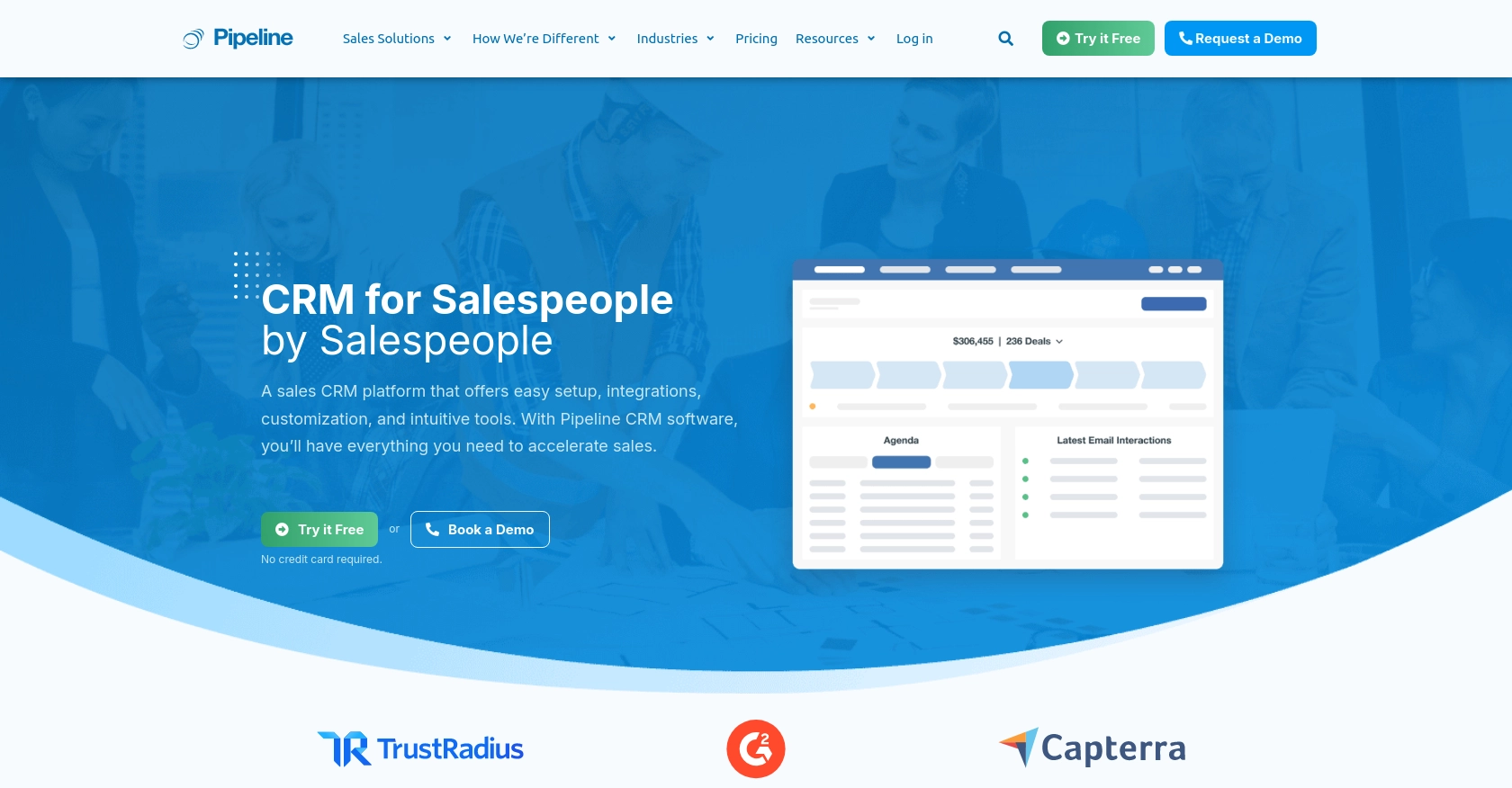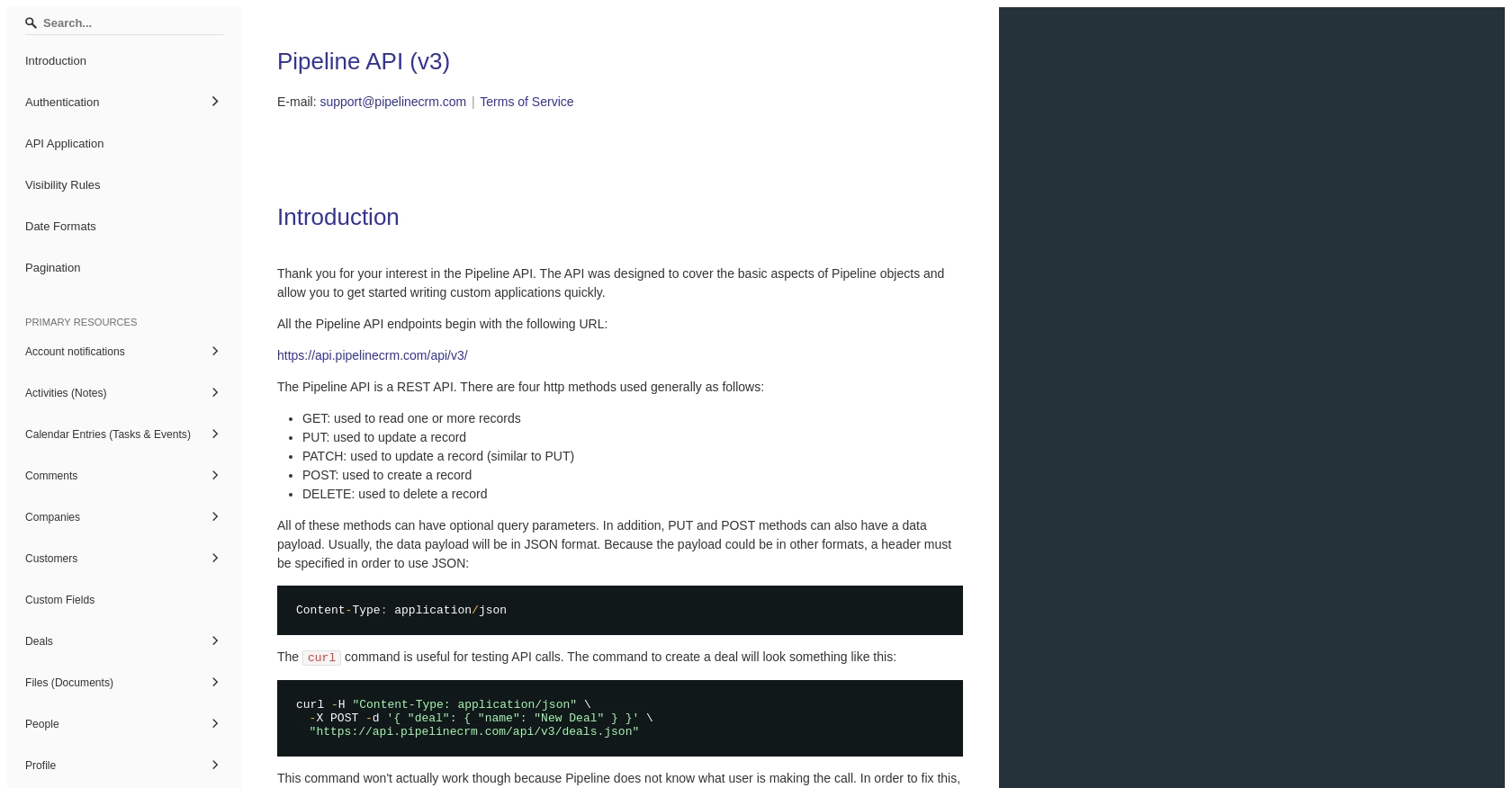Using the PipelineCRM API to Get Users (with Python examples)

Introduction to PipelineCRM
PipelineCRM is a powerful customer relationship management platform designed to help businesses streamline their sales processes and improve customer interactions. With its user-friendly interface and robust features, PipelineCRM enables teams to manage leads, track sales activities, and analyze performance effectively.
Integrating with the PipelineCRM API allows developers to access and manage user data, enhancing the ability to automate and customize CRM workflows. For example, a developer might use the PipelineCRM API to retrieve user information and integrate it with other business applications, ensuring seamless data flow and improved productivity.
Setting Up Your PipelineCRM Test Account
Before you can start interacting with the PipelineCRM API, you'll need to set up a test account. This will allow you to experiment with the API without affecting any live data. Follow these steps to get started:
Creating a PipelineCRM Account
If you don't already have a PipelineCRM account, you can sign up for a free trial on their website. This will give you access to the platform's features and allow you to test the API integration.
- Visit the PipelineCRM website.
- Click on the "Sign Up" button and follow the instructions to create your account.
- Once your account is set up, log in to access the dashboard.
Generating an API Key for PipelineCRM
PipelineCRM uses API key-based authentication to secure API requests. Follow these steps to generate your API key:
- Log in to your PipelineCRM account.
- Navigate to the "Settings" section from the main menu.
- Find the "API Keys" option and click on it.
- Click on "Generate New API Key" and provide a name for your key.
- Copy the generated API key and store it securely, as you'll need it to authenticate your API requests.
For more detailed information, refer to the PipelineCRM API documentation.

sbb-itb-96038d7
Making API Calls to Retrieve Users from PipelineCRM Using Python
To interact with the PipelineCRM API and retrieve user data, you'll need to use Python, a versatile programming language known for its simplicity and readability. This section will guide you through the process of making API calls to PipelineCRM, ensuring you can efficiently access user information.
Setting Up Your Python Environment for PipelineCRM API Integration
Before making API calls, ensure you have the following prerequisites installed on your machine:
- Python 3.11.1 or later
- The Python package installer, pip
Once these are installed, open your terminal or command prompt and install the requests library, which will help you make HTTP requests:
pip install requestsWriting Python Code to Fetch Users from PipelineCRM
With your environment set up, you can now write the Python code to retrieve users from PipelineCRM. Create a file named get_pipelinecrm_users.py and add the following code:
import requests
# Set the API endpoint and headers
endpoint = "https://api.pipelinecrm.com/v3/users"
headers = {
"Authorization": "Bearer Your_API_Key",
"Content-Type": "application/json"
}
# Make a GET request to the API
response = requests.get(endpoint, headers=headers)
# Check if the request was successful
if response.status_code == 200:
# Parse the JSON data from the response
users = response.json()
# Loop through the users and print their information
for user in users:
print(user)
else:
print(f"Failed to retrieve users: {response.status_code} - {response.text}")
Replace Your_API_Key with the API key you generated from your PipelineCRM account.
Running the Python Script and Verifying the Output
To execute the script, run the following command in your terminal:
python get_pipelinecrm_users.pyIf the request is successful, you should see a list of users printed in your terminal. If there are any errors, the script will output the error code and message, helping you diagnose the issue.
Handling Errors and Troubleshooting API Requests
When working with APIs, it's crucial to handle potential errors gracefully. The PipelineCRM API may return various error codes, such as:
- 401 Unauthorized: Check if your API key is correct and has the necessary permissions.
- 404 Not Found: Verify the endpoint URL for any typos or changes in the API version.
- 500 Internal Server Error: This indicates a problem on the server side. Try again later or contact support if the issue persists.
For more detailed error handling, refer to the PipelineCRM API documentation.
Conclusion and Best Practices for Using the PipelineCRM API
Integrating with the PipelineCRM API offers developers a powerful way to enhance CRM workflows by accessing and managing user data programmatically. By following the steps outlined in this guide, you can efficiently retrieve user information using Python, ensuring seamless integration with other business applications.
Best Practices for Secure and Efficient API Integration
- Secure API Key Storage: Always store your API keys securely, using environment variables or a secure vault, to prevent unauthorized access.
- Handle Rate Limiting: Be mindful of any rate limits imposed by the PipelineCRM API to avoid service interruptions. Implement exponential backoff strategies to handle rate limit errors gracefully.
- Data Transformation and Standardization: Ensure that the data retrieved from the API is transformed and standardized to fit your application's requirements, facilitating smooth data integration.
Streamlining Integrations with Endgrate
While integrating with individual APIs like PipelineCRM can be beneficial, managing multiple integrations can become complex and time-consuming. Endgrate offers a unified API solution that simplifies this process by providing a single endpoint to connect with various platforms, including PipelineCRM.
By leveraging Endgrate, you can save time and resources, allowing your team to focus on core product development. With Endgrate, you build once for each use case and enjoy an intuitive integration experience for your customers.
Explore how Endgrate can enhance your integration strategy by visiting Endgrate today.
Read More
Ready to get started?
